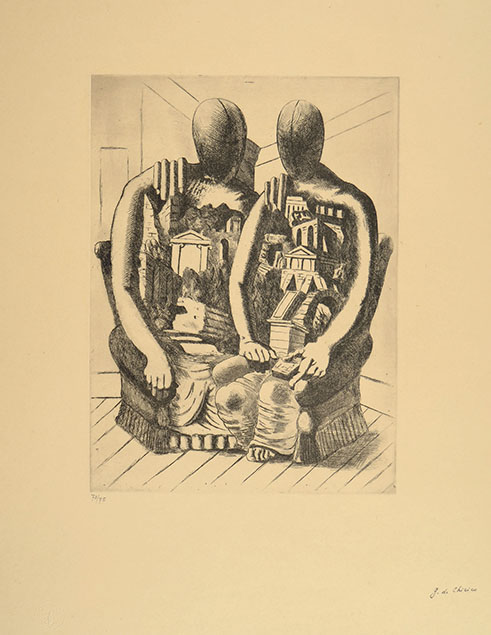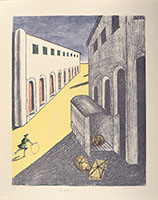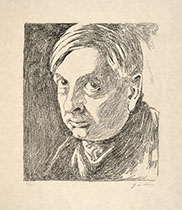(VOLOS 1888 - ROME 1978)
GLI ARCHEOLOGI II, 1927
Etching, 1927; Ciranna 2, Vastano 2. Pulled on simili Japan paper. Numbered in pencil at bottom 73/75 and signed in pen G. De Chirico.
The edition was of 75, numbered with romans, and one artist's proof.
PROVENANCE: the print was published by Lamberto Vitali for his Grafica Moderna editions and bears his blind mark: a cricket with letters G M.
To the platemark 333 x 245 mm, the full sheet 600 x 470 mm.
Giorgio de Chirico was born in Greece, to Italian parents. He received his first drawing lessons at the Polytechnic Institute in Athens in 1900. In 1906, the family moved to Munich, where de Chirico attended the Academy of Fine Arts, becoming acquainted with the magic realism of Swiss-German painter Arnold Böcklin and the writings of Friedrich Nietzsche. At various important junctures in his career de Chirico lived in Paris (1911–15, 1925–32), as well as in the United States (1936–38), but he spent most of his life in Italy. In Ferrara in 1917 he met the artist Carlo Carrà, with whom he developed the concept of Pittura Metafisica and began producing dreamlike images of deserted cities and still scenes with mysterious mannequins made from combinations of objects. These pictures of a restless dream world evoke the heightened perception of the subconscious and are the direct antecedents of the Surrealism of the 1920s. In 1926, however de Chirico changed to a more classical style with traditional subject matter. It was not until 1955-1960 that he openly went back to creating art with Metaphysical subject matter.


